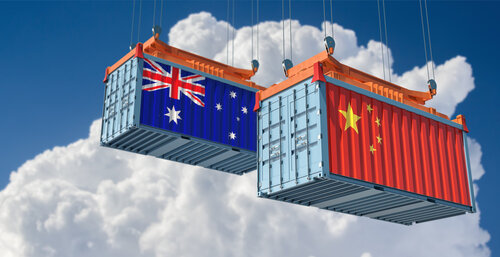
Introduction to Shipping from China to Australia
Shipping goods internationally, especially from China to Australia, can be both complex and challenging. This comprehensive guide aims to provide valuable insights on transit times, customs clearance, and practical tips for a smooth shipping experience.
Understanding Shipping Methods and Their Transit Times
When shipping from China to Australia, it’s crucial to understand the various shipping methods available and their respective transit times. The three primary methods are:
Air Freight
Air freight is the fastest shipping method, transporting goods via commercial or cargo airlines. Transit times for air freight typically range from 3 to 5 days, making it suitable for time-sensitive or high-value shipments.
Sea Freight
Sea freight is the most common method for shipping from China to Australia. It involves transporting goods in shipping containers aboard cargo ships. Transit times for sea freight usually range from 18 to 30 days, depending on the route and destination port.
Express Courier
Express couriers offer door-to-door delivery services for smaller parcels and packages. Combining air and ground transportation, express couriers can deliver shipments from China to Australia within 5 to 7 days. This option is ideal for urgent or lightweight shipments.
A Comprehensive Guide to Customs Clearance
Successfully clearing customs is essential for a seamless shipping process. Here, we provide an in-depth guide to the customs clearance process and its requirements:
Required Documents for Customs Clearance
- Commercial Invoice: This document provides essential information about the goods, such as the description, quantity, and value.
- Packing List: This document details the contents, dimensions, and weight of the shipment.
- Bill of Lading (for sea freight) or Air Waybill (for air freight): This document serves as a contract between the shipper and the carrier.
- Certificate of Origin: This document certifies the country where the goods were produced.
Import Taxes and Duties
Import taxes and duties, including the Goods and Services Tax (GST), may apply to your shipment. These taxes are calculated based on the value of the goods and the applicable duty rates. It’s essential to familiarise yourself with these regulations to ensure accurate payment and avoid delays.
External resource: Australian Border Force – Importing Goods
Prohibited and Restricted Items
Certain items are prohibited or restricted when importing goods into Australia. It’s crucial to familiarise yourself with these regulations and obtain any necessary permits or licenses. You can find more information on the Australian Border Force website.
Practical Tips for a Smooth Shipping Experience
To ensure a seamless shipping process, consider the following practical tips:
- Choose the Right Shipping Method: Select a shipping method that best suits your specific requirements, such as shipment size, urgency, and value.
- Work with a Reliable Shipping Partner: Collaborate with an experienced shipping partner with expertise in navigating complex regulations and shipping routes.
- Stay Informed on Regulations: Keep up to date with the latest customs regulations and requirements to avoid unexpected delays or additional costs.
- Properly Pack and Label Shipments: Ensure that your shipments are securely packed and accurately labeled to minimize the risk of damage or loss during transit.
- Monitor Shipment Progress: Utilise the tracking services provided by your shipping company to stay updated on your shipment’s progress and estimated arrival date.
- Prepare Accurate Documentation: Ensure that all required documentation is accurate and complete to expedite the customs clearance process and avoid delays.
- Consider Insurance: Depending on the value of your shipment, it might be wise to purchase insurance to protect against potential loss or damage during transit.
- Understand Incoterms: Familiarise yourself with the International Commercial Terms (Incoterms) to better understand the responsibilities and costs associated with each stage of the shipping process.
- Plan for Potential Delays: Prepare contingency plans to manage potential delays resulting from unforeseen circumstances, such as weather conditions, port congestion, or customs issues.
- Stay in Communication with Your Shipping Partner: Maintain open communication with your shipping partner to address any concerns or issues promptly and effectively.
Conclusion
Successfully shipping goods from China to Australia requires a clear understanding of transit times, customs clearance processes, and practical strategies for ensuring a smooth experience. By following this comprehensive guide and implementing the suggested tips, you can better navigate the complexities of international shipping and safeguard your interests.
Frequently Asked Questions (FAQ)
Q1: What is the cheapest shipping method from China to Australia?
A1: Sea freight is generally the cheapest shipping method due to its lower cost per kilogram compared to air freight and express courier services.
Q2: How can I track my shipment from China to Australia?
A2: Most shipping companies provide tracking services via their websites or mobile apps. By entering your shipment’s tracking number, you can monitor its progress and receive updates on its estimated arrival date.
Q3: What are the main ports in China and Australia for shipping?
A3: In China, the main ports include Shanghai, Shenzhen, Ningbo, and Guangzhou. In Australia, key ports for receiving shipments are Sydney, Melbourne, Brisbane, and Fremantle.
Q4: Are there any restrictions on importing goods from China to Australia?
A4: Yes, certain items are prohibited or restricted when importing goods into Australia. It’s essential to familiarize yourself with these regulations and obtain any necessary permits or licenses. You can find more information on the Australian Border Force website.
Q5: What are the main challenges faced by businesses when shipping from China to Australia?
A5: Some common challenges include navigating complex customs regulations, managing transit times, and selecting the most cost-effective shipping method. Partnering with an experienced shipping partner can help mitigate these challenges and ensure a successful shipping process.
